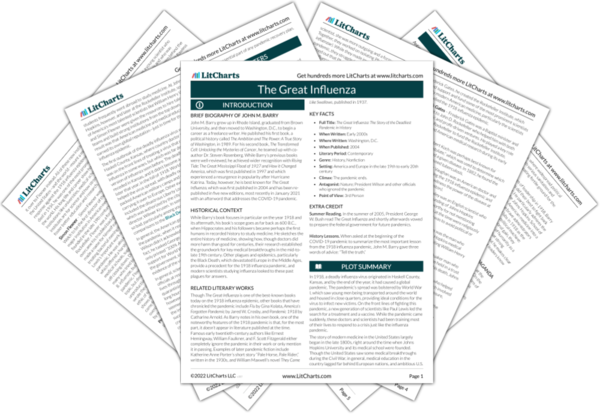In common speech, there is often little need to distinguish between “the flu” or simply a bad cold, since the results are functionally the same. For a scientist, however, small differences like this are of vital importance to research. While Barry doesn’t use language as technical as what a scientist might use, he introduces finer distinctions in language in order to show how and why scientists use such detailed systems of classification.
